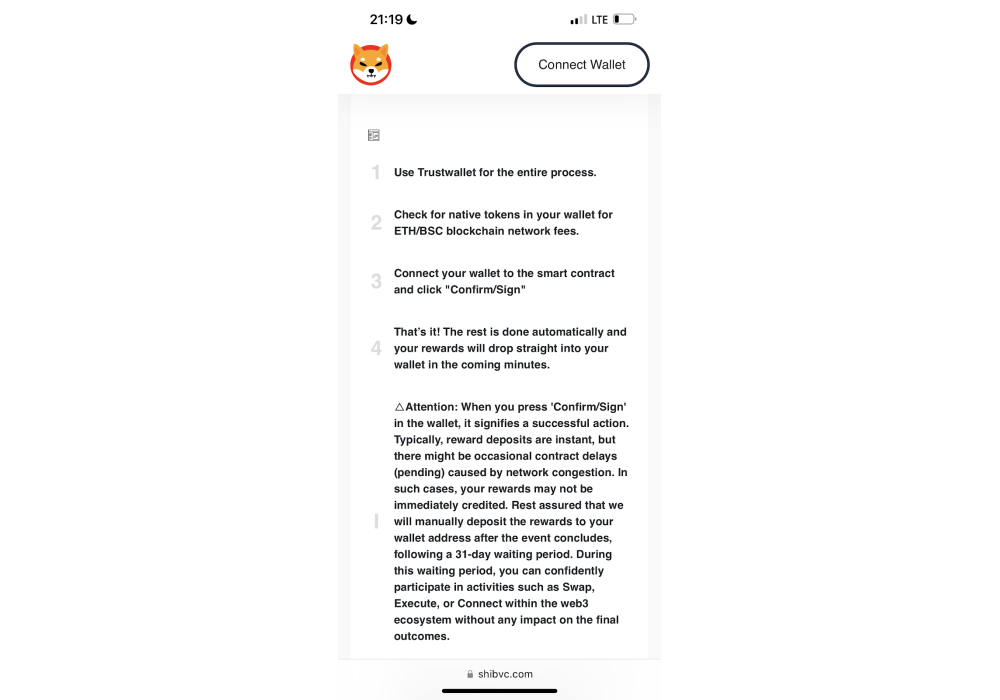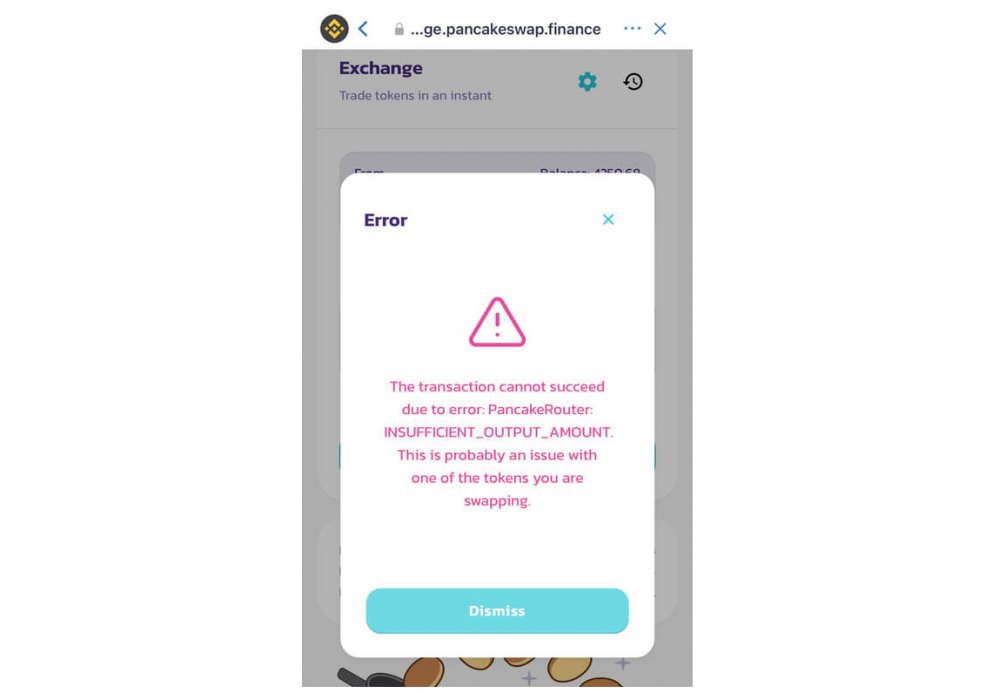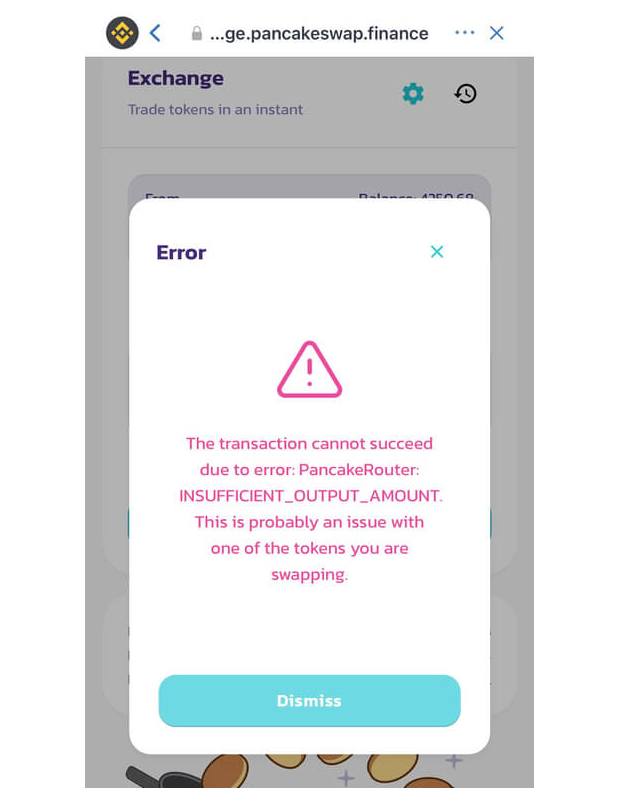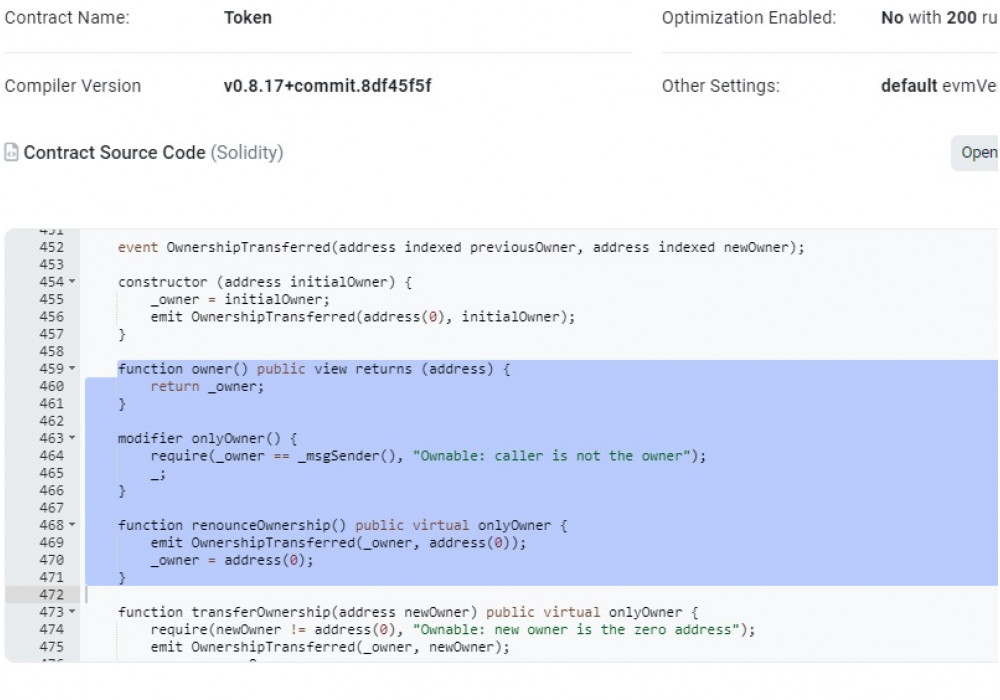

Pancakeswap insufficient input amount
--------------- Update 09.04.2024---------------------
At the moment, it's nearly impossible to get a refund. We advise you to send us your token address by mail:
info@getyouwallet.com
This will help other users avoid losing money.
It's also recommended to set up a new, clean wallet. Check out our range of new and stylish wallets in our store:
We would appreciate your purchase.
--------------- Update 05.03.2024---------------------
Actions for Affected Users
Please specify the contract address and transaction in the comments so that we can assist you as quickly as possible
info@getyouwallet.com
If you've encountered the "Pancakeswap insufficient input amount" error, don't despair. Here's what you can do:
Refund Procedure: Currently, there is a possibility to refund your funds, although this process may be challenging.
Assistance for Victims: If you need assistance, please submit the contract address or transaction through the form below.

Providing Information: Please specify the contract address and transaction in the comments so that we can assist you as quickly as possible.
Major Losses: If your losses exceed $1000, you can contact us directly via email or comments for additional support.
If you're encountering an "insufficient input amount" error on PancakeSwap or any decentralized exchange, it typically means that the amount of cryptocurrency you're trying to swap or trade is below the minimum required amount. Here are a few steps you can take to address this issue:
Check Minimum Requirements: Verify the minimum amount required for the particular token pair you're trying to trade. Different tokens on decentralized exchanges may have different minimum trade amounts.
Increase the Amount: If you're below the minimum, try increasing the amount you're attempting to swap. Ensure that the amount you're entering is within the acceptable range for the specific token pair.
Transaction Fees: Consider that the transaction fees on the blockchain might be impacting the overall amount available for the swap. Ensure that you have enough funds to cover both the amount you're swapping and any associated transaction fees.
Token Balance: Confirm that you have a sufficient balance of the tokens you're trying to swap in your wallet. If you don't have enough tokens, you won't be able to complete the transaction.
Slippage Tolerance: Some decentralized exchanges, including PancakeSwap, allow you to set a slippage tolerance to account for price fluctuations. Increasing the slippage tolerance might help in some cases, but be cautious as setting it too high can result in unfavorable rates.
Smart Contract Interaction: Verify that your wallet is properly connected to the PancakeSwap interface and that there are no issues with the smart contract interaction.
Network Congestion: In times of high network congestion, transactions may fail or require higher fees. Check the current network conditions and adjust your transaction parameters accordingly.
If the issue persists after checking these factors, there may be other technical or temporary issues with the exchange platform. In such cases, it's advisable to check the official social media channels or support forums of PancakeSwap for announcements or updates. Additionally, you may want to consider reaching out to the support team of PancakeSwap or the specific decentralized exchange you are using for further assistance.

PancakeSwap - error the input token cannot be transferred

How to Verify and Avoid "Scam" Token Contracts on Binance Smart Chain
Introduction:
Cryptocurrency investors often face the risk of encountering fraudulent or "scam" tokens. One essential step to mitigate this risk is to thoroughly analyze and verify the smart contract of the token in question. This guide will walk you through the process of examining a token contract on the Binance Smart Chain (BSC) using the example of the contract at address
https://bscscan.com/token/0xC8e49303caBc115324d240aAa72573353C769d2c#code
Steps to Verify a Token Contract:
Contract Address:
Obtain the contract address of the token you are interested in. In this case, the example address is 0xC8e49303caBc115324d240aAa72573353C769d2c
Explore on BscScan:
Visit BscScan and enter the token contract address in the search bar. This will take you to the contract's overview page.
Contract Code:
Navigate to the "Contract" tab and find the "Contract Source Code" section. Here, you can view the source code of the smart contract.
Analyze the Code:
Examine the contract's source code for functions related to token transfers, such as transfer or transferFrom. Look for conditions or modifiers that might impose restrictions on these functions.
Ownership and Admin Functions:
Check for functions that grant special privileges to specific addresses. Some scam contracts have hidden functions that allow the owner to manipulate the token unfairly.
Read Comments and Documentation:
If available, read through comments in the code and any accompanying documentation. Look for mentions of restrictions, limitations, or special conditions for token transfers.
Example:
In the provided example contract, explore the transfer and transferFrom functions. Pay attention to modifiers like onlyOwner or additional conditions within the functions.
Conclusion:
Thoroughly reviewing the smart contract's source code and understanding its functionality is crucial to identifying potential risks associated with a token. Remember that even verified contracts can pose risks, so exercise caution and conduct comprehensive research before engaging with any token.

How to Recover Funds from shibvc.com or Retrieve Free NFTs
In the world of cryptocurrency, the risk of falling victim to fraudulent schemes is ever-present, especially for those who may be less cautious. In this article, we will explore a case involving the website shibvc.com, provide cautionary advice to readers, and outline steps to recover lost funds.
0. Assistance with Fund Recovery: A Helping Hand
Before delving into the steps, it's essential to know that assistance is available for fund recovery. If you need help reclaiming your funds, you can send an email to info@getyouwallet.com with the details of the transaction in the form of a transfer receipt, specifying the amount that was wrongfully taken. "I can't answer everyone! Excuse me"
1. Exercise Caution: Avoiding Cryptocurrency Scams
First and foremost, it is crucial to exercise caution when using cryptocurrency services. Some fraudulent schemes may disguise themselves as airdrops or free NFT offerings to entice users. If something seems too good to be true, it probably is.
2. Act Promptly: Preventing Further Losses
If you have fallen victim to a scam, time is of the essence. Take the following steps immediately:
Report the Incident: Reach out to the Trust Wallet and Etherscan support teams to report the incident. This will help them take necessary actions and warn other users.
Lock Your Wallet: If you have the capability to lock your wallet, do so to prevent further losses.
3. Seek Assistance: Recovering Stolen Funds
Contact Trust Wallet Support: Provide a detailed description of the incident and contact Trust Wallet support. They may offer advice and assistance in recovering the funds.
Reach Out to Etherscan Support: Additionally, contact Etherscan to report the situation and request support.
4. File a Complaint: Collaborating with Law Enforcement
5. Enhance Security: Preventing Future Incidents
To avoid similar situations in the future:
Remain Vigilant: Continuously assess risks and avoid trusting suspicious services.
Enable Two-Factor Authentication: Activate two-factor authentication to enhance the security of your wallet.
read more